Masai Mara Safari Travel Tips: Know Before You Go
The Masai Mara safari offers a chance to witness some of the most breathtaking wildlife moments on Earth. To truly enjoy this adventure, a bit of preparation is key. From selecting the best Masai Mara tour packages to packing smart and understanding safari etiquette, these tips will help you get the most out of your experience. Whether it’s your first visit or a return trip, following these suggestions will ensure your time at Mara Siligi Camp and beyond is safe, comfortable, and unforgettable.
Table of Contents:
- Why Masai Mara Should Be On Your Travel Bucket List
- How to Choose the Right Masai Mara Tour Package
- Best Time to Visit the Mara for Safari
- What to Pack for Your Masai Mara Safari
- Staying at Mara Siligi Camp
- Safari Safety Tips & Etiquette
- Wildlife Photography & Game Drive Advice
- Final Words Before You Set Off
Why Masai Mara Should Be On Your Travel Bucket List
There’s something about Masai Mara that stays with you long after you’ve left. Maybe it’s the golden plains stretching endlessly into the horizon, the heart-pounding presence of a lion just a few feet away, or the once-in-a-lifetime thrill of watching the Great Migration thunder across the Mara River.
Over the years, we’ve welcomed travelers from every corner of the globe—and the one thing they all say?
“It’s even better than I imagined.”
Booking a Masai Mara safari isn’t just about checking a box on your travel list—it’s about stepping into a world that feels raw, untamed, and breathtakingly beautiful. You’re not just visiting; you’re participating in the circle of life, witnessing drama unfold in real-time.
Whether you’re planning your very first African adventure or you’ve already explored other reserves, the Mara never fails to surprise. With expertly curated Masai Mara tour packages, you can tailor your experience to suit your pace—be it a short getaway or a deep-dive into the wild. From staying at intimate camps like Mara Siligi Camp to choosing personalized Masai Mara packages with expert guides, your safari can be as wild or as relaxed as you want it to be.
No matter when you go or how many safaris you’ve done before, Masai Mara always has something new to show you.
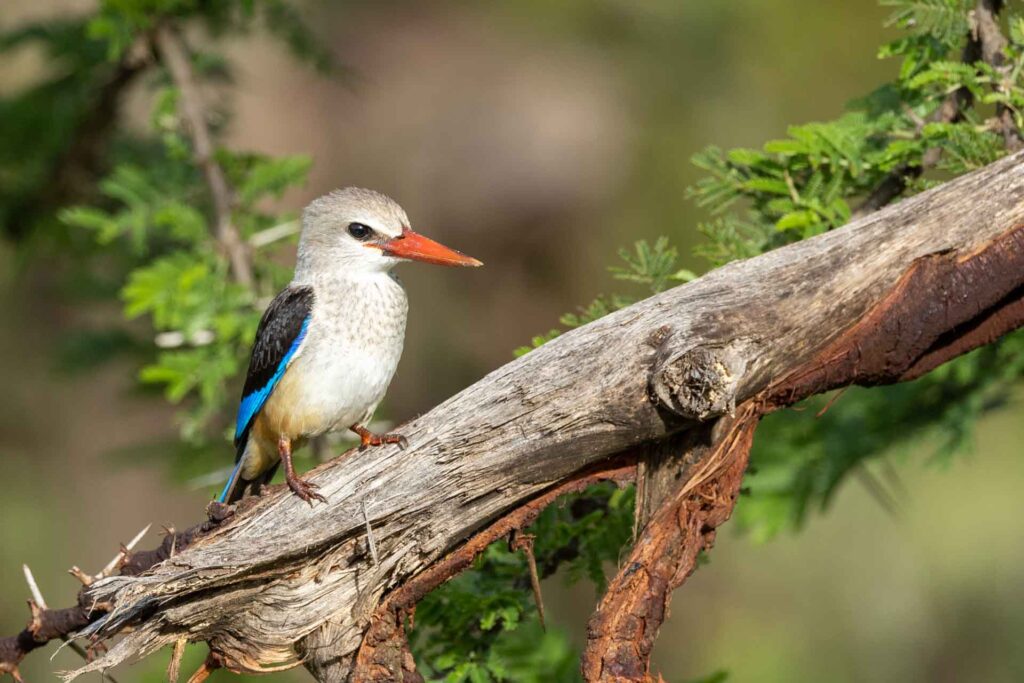
How to Choose the Right Masai Mara Tour Package
With so many Masai Mara tour packages out there, it’s easy to feel overwhelmed. We get it. From luxury fly-in safaris to Mid range-friendly road trips, and everything in between—there’s no one-size-fits-all when it comes to a Masai Mara safari. Your perfect experience depends on what kind of traveler you are and what memories you want to take back.
When browsing through Masai Mara safari packages, here are a few things worth considering:
- Group size – Smaller groups often mean more flexible schedules, quieter moments in nature, and more personalized game drives.
- Number of game drives – Some Masai Mara packages offer two drives per day, while others might include walking safaris or night drives. More drives = more chances to see the Big Five.
- Guide experience – Honestly, this one’s huge. A knowledgeable guide doesn’t just point out animals—they interpret behavior, track movement, and make the safari unforgettable.
- Accommodation type – Are you imagining a luxury tented suite with hot showers and sundowners, or are you craving the charm of a rustic bush experience like at Mara Siligi Camp?
Personally, we’ve curated experiences that balance comfort with authenticity—so you get the magic of the wild, without compromising on safety, connection, or quality. Whether you’re after a short escape or an extended stay, there’s a Masai Mara safari package that fits your pace, range, and travel style.
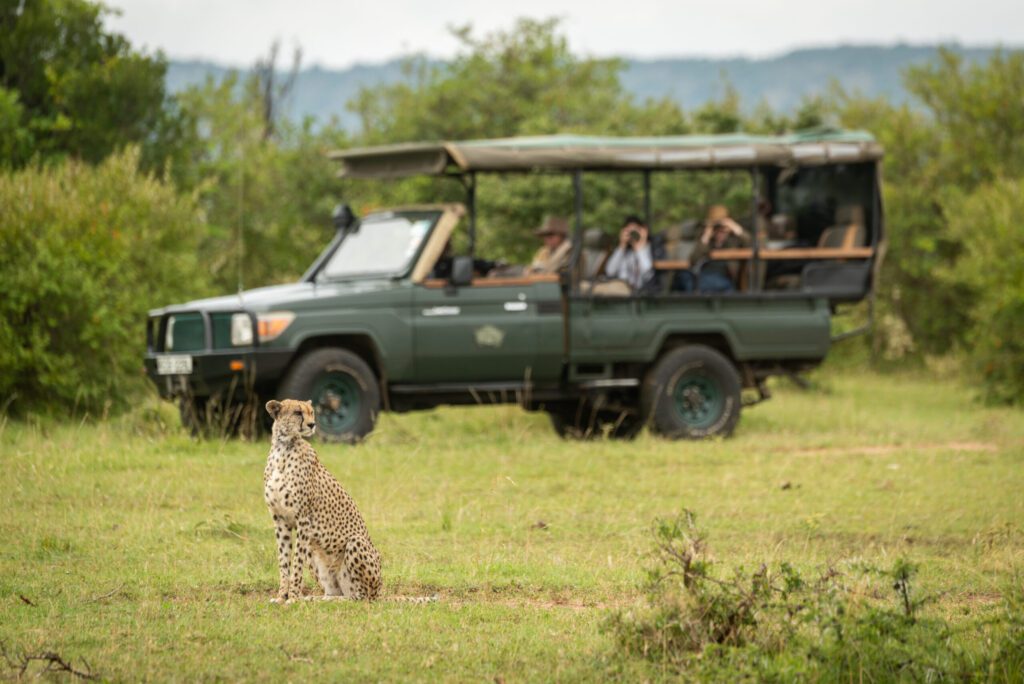
Best Time to Visit the Mara for Safari
“When’s the best time to visit Masai Mara?” It’s a question we hear all the time—and the answer really depends on what kind of experience you’re after.
Here’s a quick breakdown to help you decide:
- July to October – If witnessing the Great Wildebeest Migration is on your bucket list, this is the time. The Mara River crossings are dramatic, raw, and unforgettable. It’s peak season, so expect more travelers—but also some of the best wildlife action.
- November to February – This is calving season. The plains are green, the light is beautiful, and you’ll see newborns everywhere. With so many young animals around, predator sightings (think lions and cheetahs on the hunt) are especially thrilling.
- March to May – Often overlooked, but full of rewards. It’s the low season, which means fewer crowds and great deals on Masai Mara safari packages. Expect dramatic skies, blooming landscapes, and excellent birdwatching.
Our personal favorite? September. It hits that sweet spot—migration is still on, the weather is pleasant, and the crowds start to thin. But truly, every season in the Mara has its own rhythm and charm. There’s never really a “bad” time—just different kinds of magic waiting to unfold.

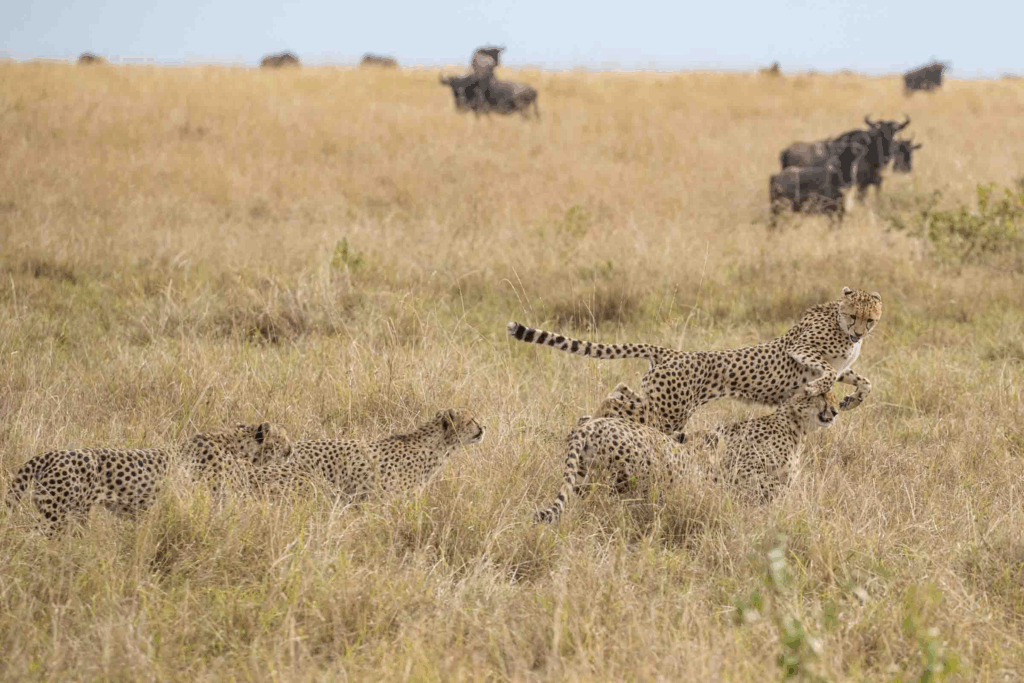
What to Pack for Your Masai Mara Safari
Packing right can make a huge difference to your overall safari experience. Over the years, we’ve seen guests arrive over- or under-prepared—so here’s our go-to list for a hassle-free adventure in the Masai Mara:
- Lightweight, neutral-colored clothing – Think khakis, olives, and beiges. These help you blend into the environment and avoid attracting insects. Skip the bright colors and anything camouflage (military-style prints are actually banned in Kenya).
- A good hat and sunglasses – The African sun is strong, even in the cooler months. A wide-brimmed hat and UV-protection shades are essentials.
- Binoculars – Spotting a leopard hidden in the grass or watching birds up close becomes much more exciting with a decent pair.
- Camera with a zoom lens – If photography is your thing, don’t rely on your phone. A DSLR or mirrorless camera with a good zoom captures those once-in-a-lifetime moments.
- Power bank or extra batteries – Many safari camps run on solar power, and charging points can be limited. Backup power keeps you ready for every shot.
- Comfortable walking shoes or safari boots – Especially important if your itinerary includes guided walks or bush excursions.
- Personal medication + a basic first aid kit – Include things like antihistamines, painkillers, and anything you rely on daily.
- A light jacket or fleece – Early morning and evening game drives in the Masai Mara can be surprisingly chilly, even in the dry season.
Tip: Pack in soft-sided duffel bags instead of hard-shell suitcases—especially if you’re flying into the Mara on a small bush plane.
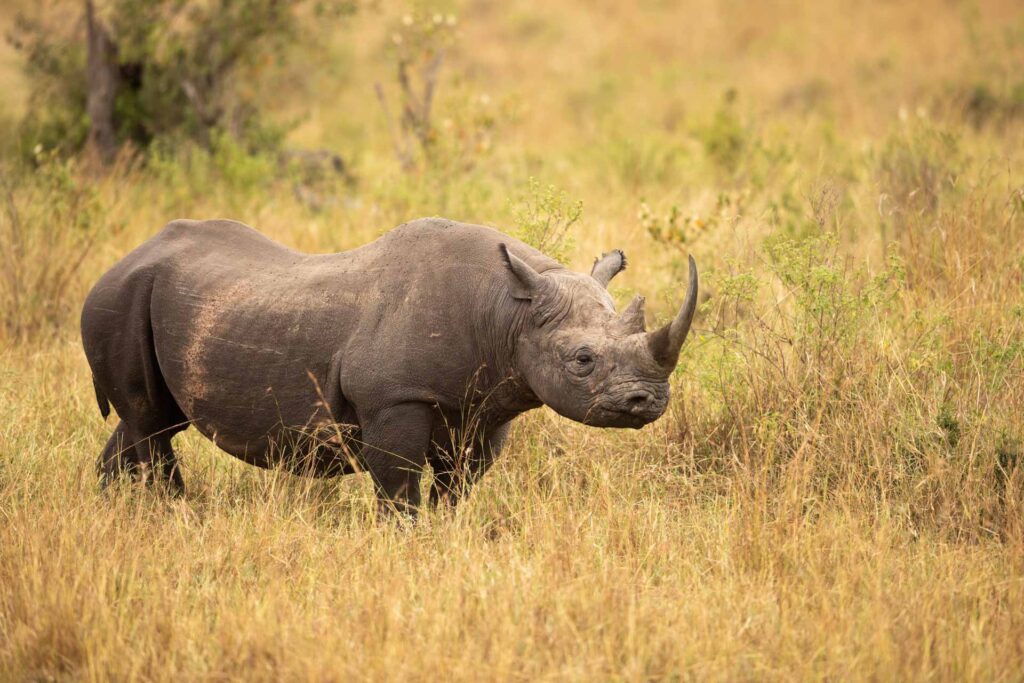
Staying at Mara Siligi Camp: A Thoughtful Safari Base
Choosing the right stay can elevate your entire Masai Mara safari—and Mara Siligi Camp strikes that perfect balance between comfort and wilderness. Here’s why many seasoned travelers pick it:
- Location matters – Just minutes from the main reserve gate, you spend more time spotting wildlife and less time driving.
- Tented comfort – Enjoy the charm of the bush with private ensuite bathrooms, so you never sacrifice convenience.
- Authentic touches – Think campfire dinners under the stars and sun-powered facilities that tread lightly on nature.
- Locally rooted team – The staff aren’t just hospitable—they’re your link to the land, with stories and tips you won’t find in guidebooks.
Guests often say they came for the game drives, but stayed for the warmth and community feel. If you’re looking for an immersive yet comfortable stay, Mara Siligi Camp is worth considering.
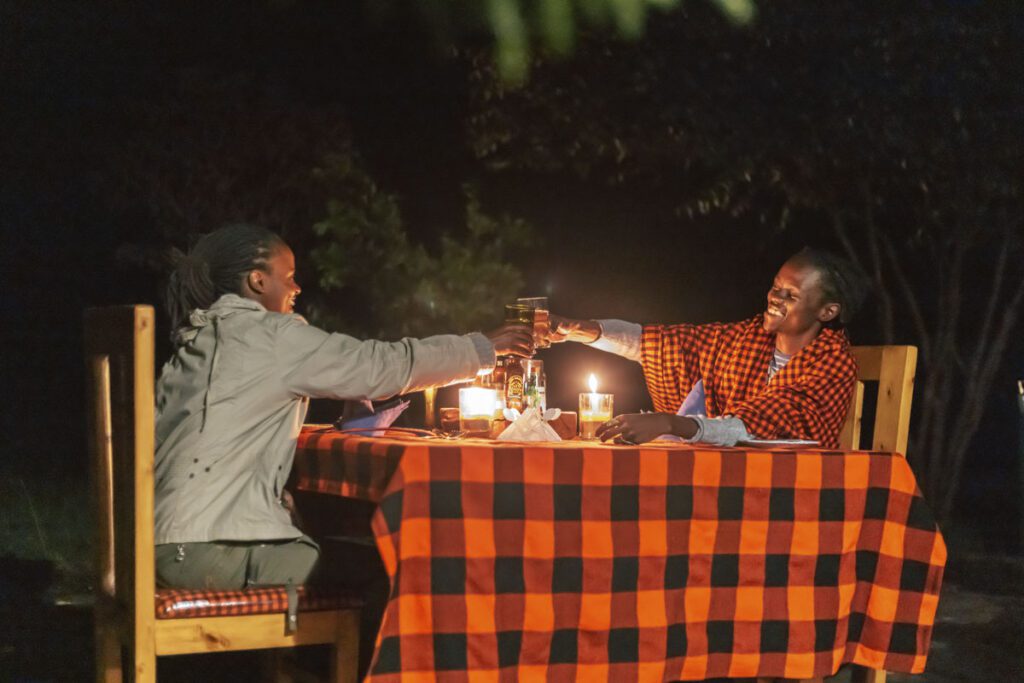
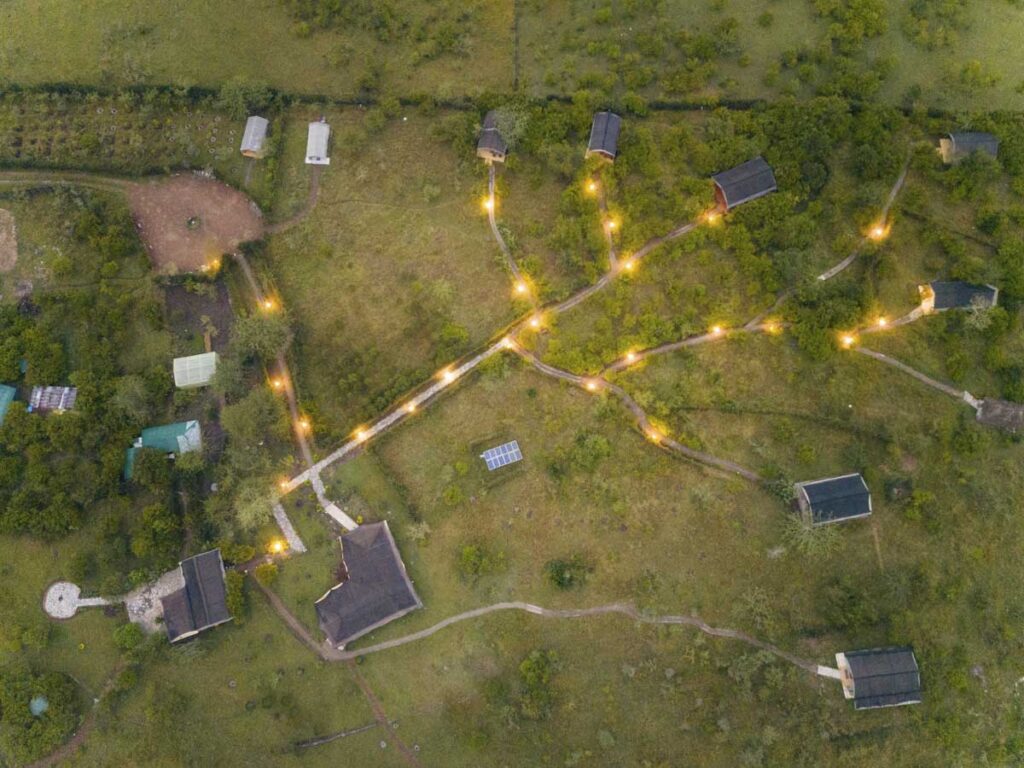
Safari Safety Tips & Etiquette: Travel Respectfully, Stay Safe
Going on safari is one of the most memorable adventures you’ll have—but it’s also important to approach it with care and respect. A few mindful actions go a long way in protecting both you and the wildlife.
- Listen to your guide – They know the terrain, animal behavior, and how to keep everyone safe.
- Stay in the vehicle – Unless your guide says it’s safe, don’t get out—even if that photo op is tempting.
- Keep it quiet – Sudden noises or shouting can startle animals or disrupt others’ experience.
- Hands off the wildlife – Never try to feed or touch animals. It’s dangerous for you and harmful for them.
- Be culturally aware – If you visit nearby villages, modest dress and respectful behavior matter.
- Show appreciation – Tipping your guide and camp staff is a thoughtful way to thank them for their hard work.
A safari isn’t just about seeing animals—it’s about being part of a delicate ecosystem. Respecting that balance makes the experience more meaningful for everyone involved.
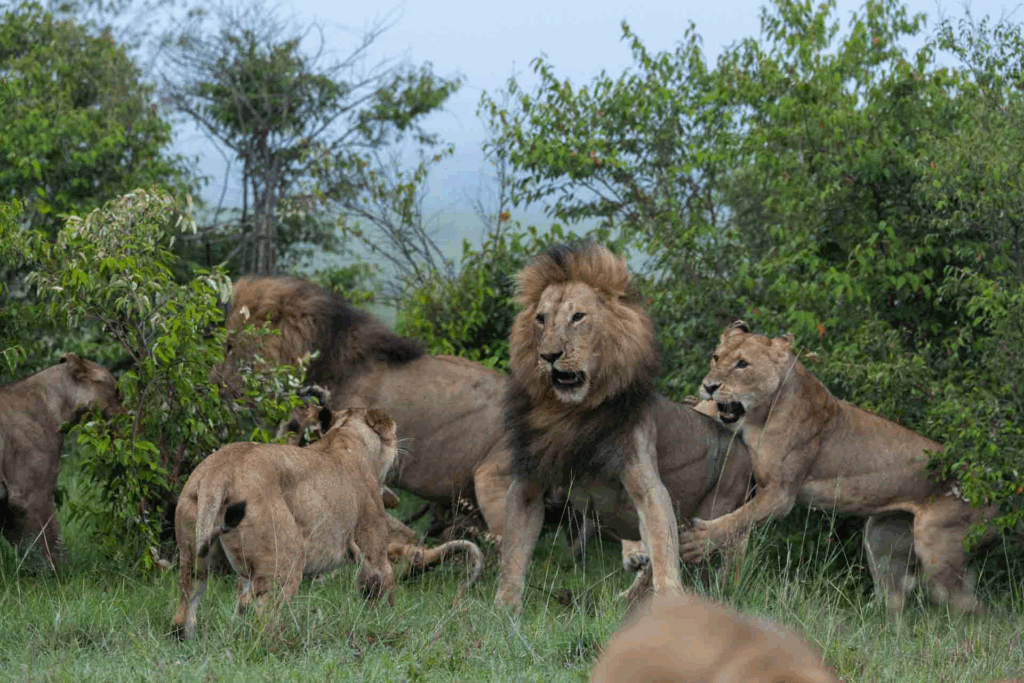
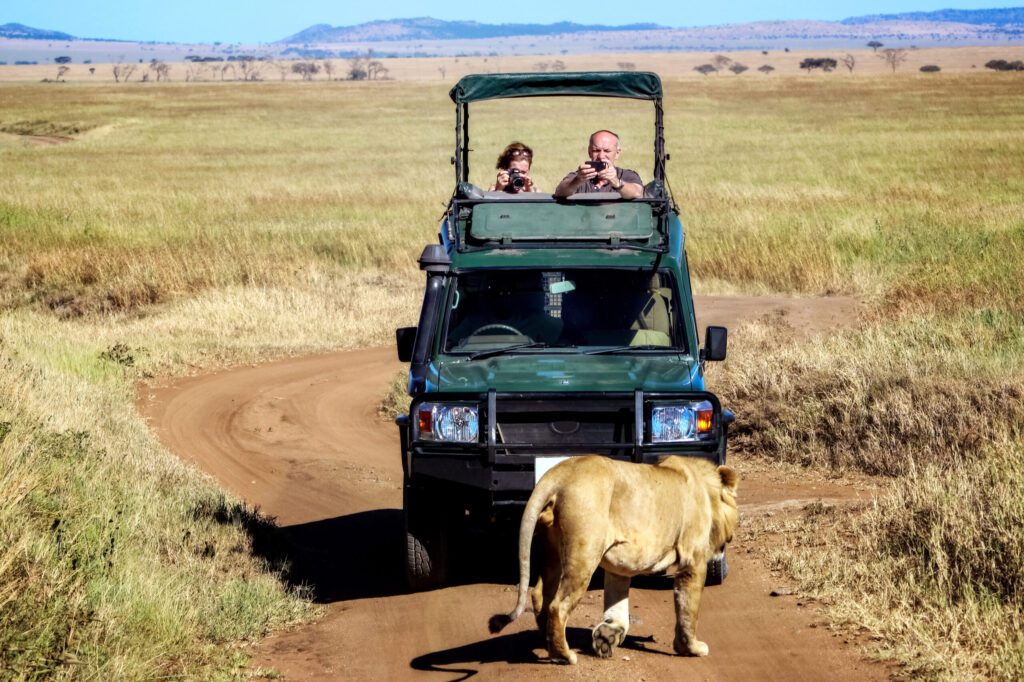
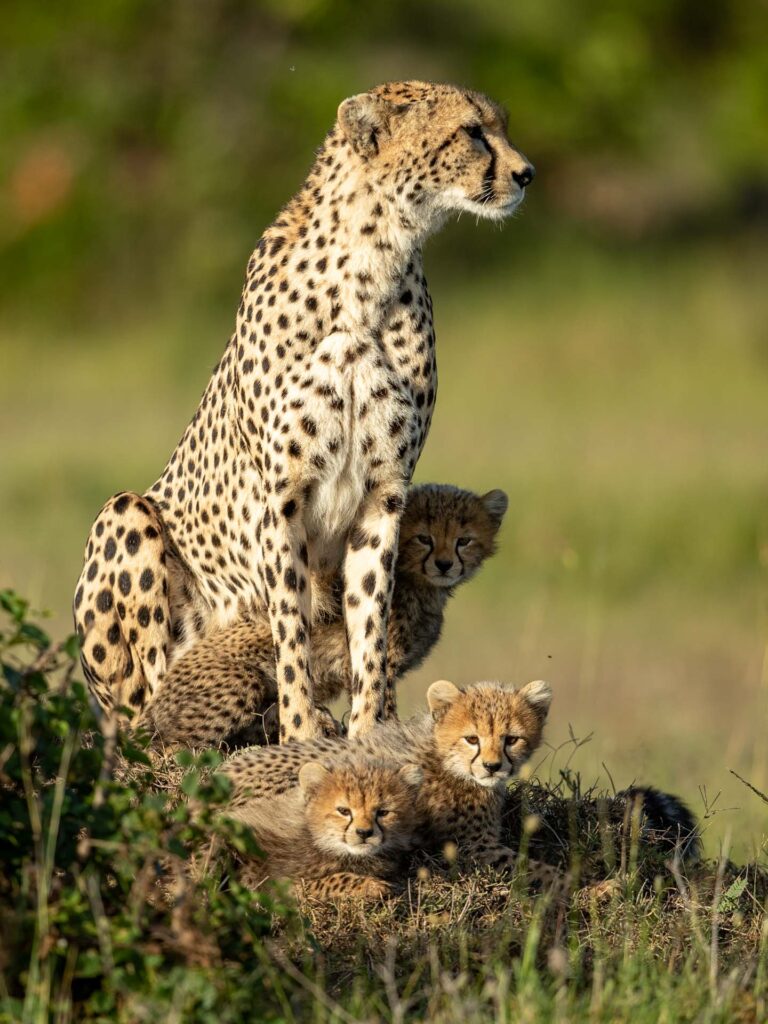
Wildlife Photography & Game Drive Advice
Whether you’re just getting started or already know your way around a camera, the Masai Mara is a dream for wildlife photography. But those unforgettable shots? They often come down to patience and preparation.
Here are a few tips we always share with our guests:
- Patience pays off – Some of the most magical moments unfold when you simply sit still and wait.
- Light is key – Early mornings and golden-hour evenings offer the softest, most flattering light.
- Bring support – A bean bag or monopod can help steady your camera, especially during bumpy drives.
- Use burst mode – For those fast-moving scenes, a rapid-fire setting improves your chances of catching the perfect frame.
- Chat with your guide – They know the landscape and behavior patterns, and can help you line up incredible angles.
Many of our guests leave with more than just memories—they leave with frame-worthy shots, captured simply by staying present and letting nature lead.
Final Words Before You Set Off
Planning a safari isn’t just about booking dates—it’s about stepping into a journey that will stay with you for life. We believe every traveler deserves a Masai Mara experience that feels seamless, authentic, and deeply memorable.
Still deciding between Masai Mara tour packages? We’re here if you need us. Whether you choose to stay at Mara Siligi Camp or explore other camps and lodges, we’re always happy to offer honest advice and help you build the kind of safari that lives up to the dream.
Let the adventure begin—Mara is waiting.



